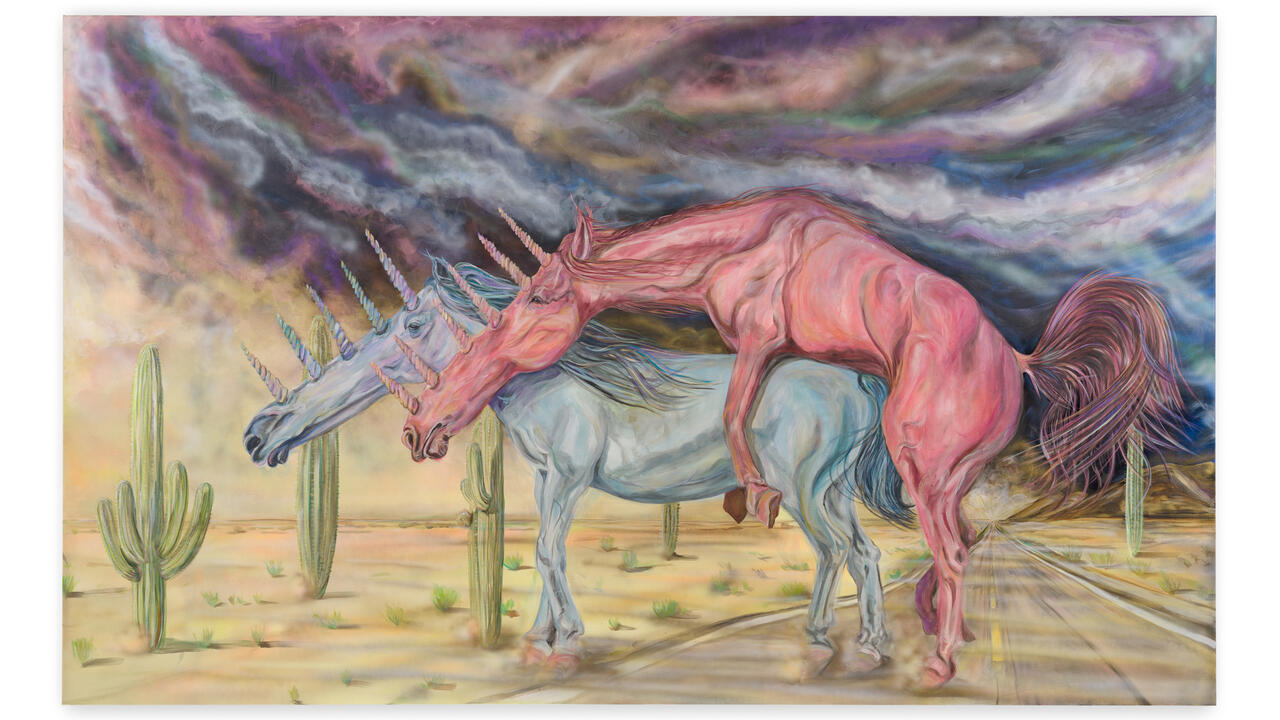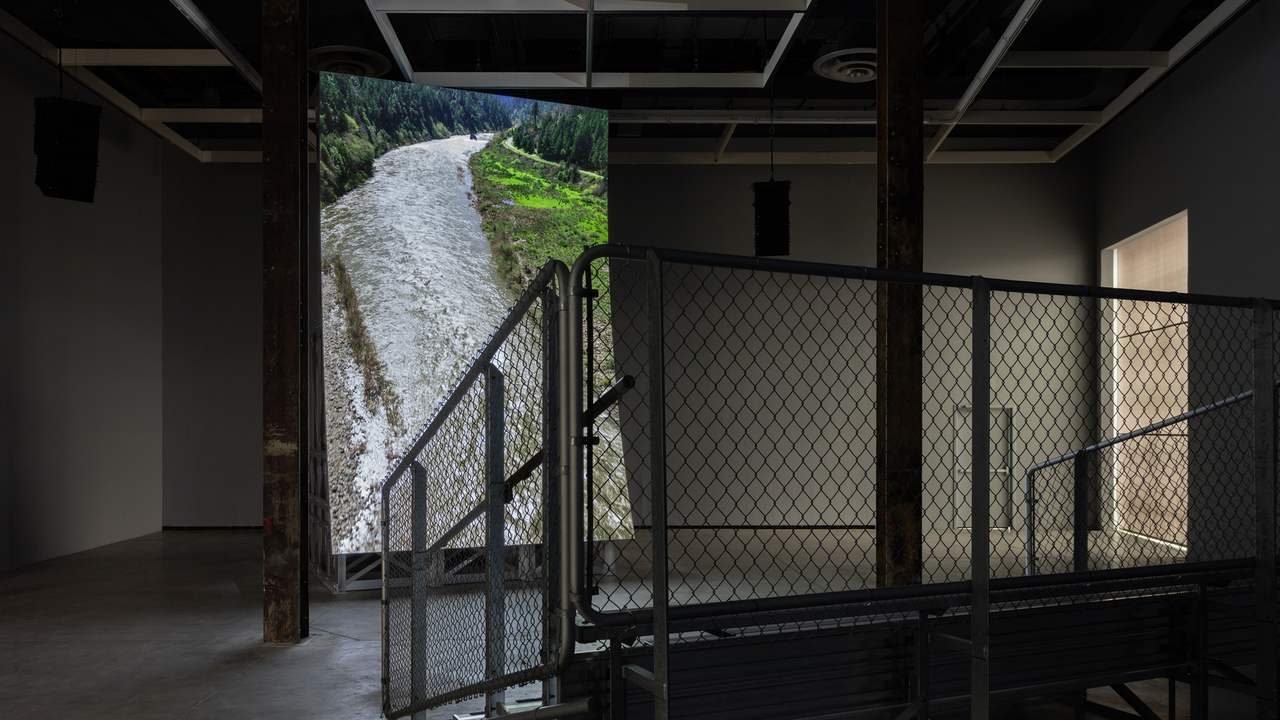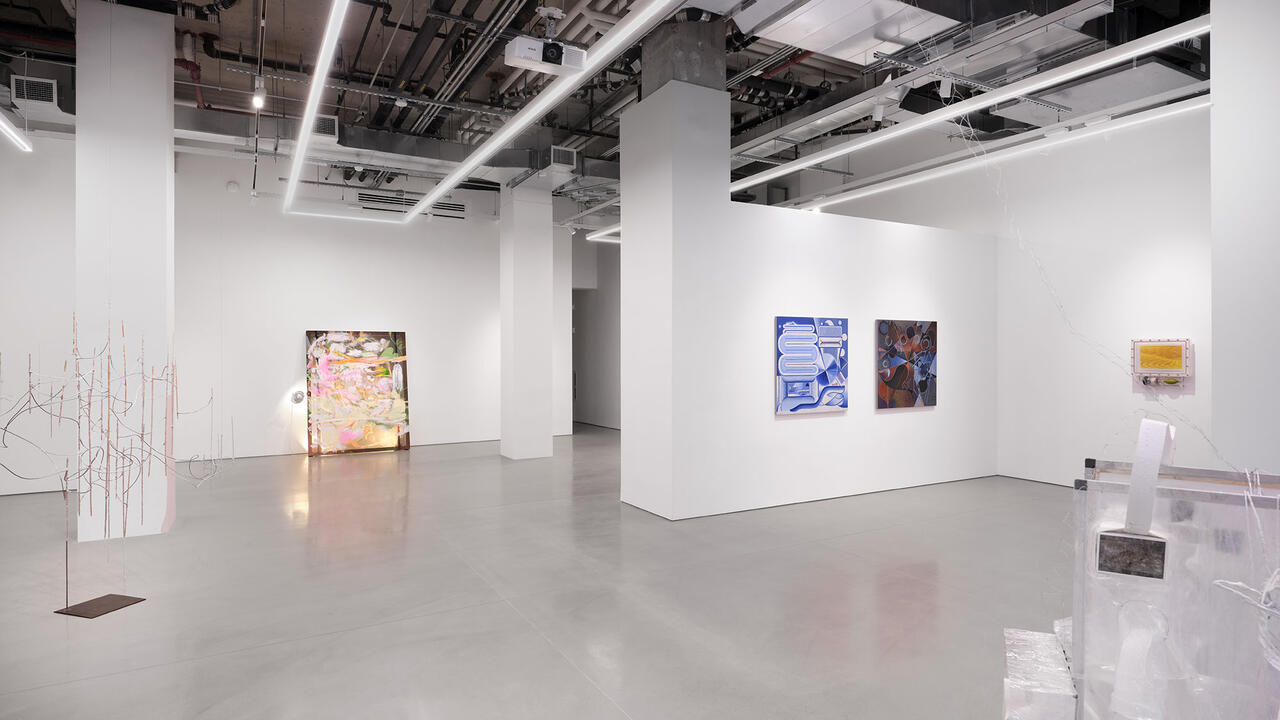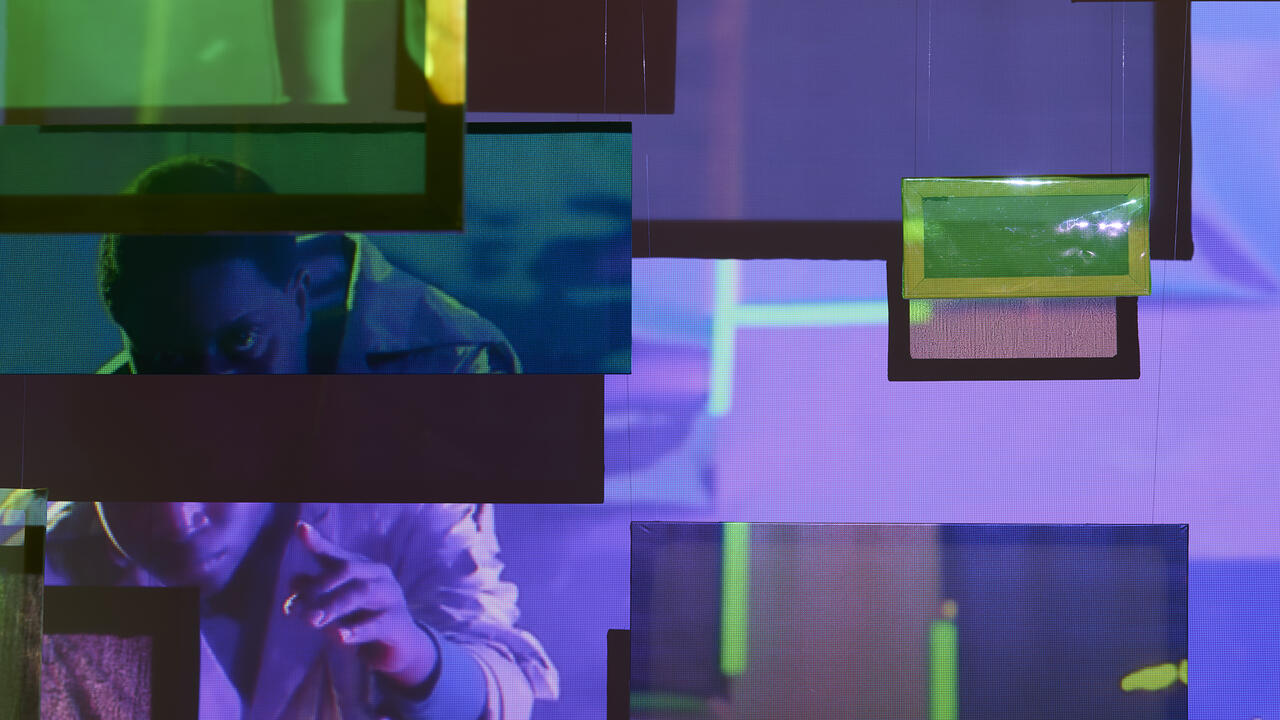Rachel Whiteread Mummifies Memory and Time
At Luhring Augustine, New York, the sculptor's embalmed everyday objects memorialize both personal and collective transformation
At Luhring Augustine, New York, the sculptor's embalmed everyday objects memorialize both personal and collective transformation

Rachel Whiteread’s alchemy turns absence into presence, refuse into potent symbolism. For her eponymous solo show at Luhring Augustine Tribeca, the artist presents a new body of work produced over the past three years that shifts the paradigm of her practice. In contrast to the smooth solemnity of her earlier work, Whiteread seems to redirect her focus towards systems of entropy and transformation. The three, free-standing sculptures in the centre of the gallery are turbulent and disordered – assemblages of disparate elements strewn together as if by a storm. Rising from a dented cubic planter in Untitled (Thicket) (2022), leafless branches are entangled with industrial detritus: a tube; an anonymous four-legged metal base; contorted wire mesh suspended like knotted ornaments from a barren, lifeless effigy of a tree. It’s thickly painted in dense layers of matte white – an act of embalming to resist further decay. Whiteread’s work has always been about revealing the invisible, making the incorporeal tactile, alienating the familiar in order to illuminate its nuances. Here, however, instead of monolithic motionlessness, she shows us a more haunting kind of stillness – one born in the wake of catastrophe.

Broken pieces of corrugated iron sheets are moulded in papier-mâché to create sculptures such as Untitled (Lavender and Pink) (2022). The papier-mâché, in turn, is made of discarded notes and collected scrap paper from the artist’s home and studio. Undulating surfaces are exuberantly painted in fantastic, shimmering colours often mixed with silver leaf and gouache. Cracks and crevices where the paint did not permeate reveal layers of variegated substrate – an archaeology of composted domesticity. In this paper simulacrum of dilapidated building material, fragmented and fragile, Whiteread seems to suggest the violence and displacement of spolia and decomposition, as well as their regenerative potential – of recycling the past in order to build new structures and fertilize new growth.

In works like Untitled (Silver Pallet) (2021), flattened cardboard boxes are cast in silver, bronze or copper. Circular impressions mark the places where obedient cans once stood, filed in symmetrical rows and stacked in ephemeral architectures, ready to be commercialized. In Whiteread’s hands, trash becomes noble, traces of daily life immortalized in precious metal. She reveals a material intelligence inherent within and yet transcendent to the matter present – a duality in which things simultaneously are and are not what they appear to be. Mounted on the gallery walls, these sculptures become windows into a self-reflective world where our values, trade networks, systems of exchange, habits of consumption and disposal become subjects of contemplation and critique. As such, we may perceive a connection between the geopolitical economic structures underlying Silver Pallet and the extreme weather event that littered Thicket’s anaemic branches.

The piece that perhaps most resembles what we imagine when we conjure Whiteread’s canon is Untitled (Bulletin Board III) (2023), a pinboard with envelopes, notes and tacks cast in resin – or rather, the negative space immediately in front of it. Homogenized across a glossy translucent surface, the board’s contents emerge in shallow relief. Void of context and personal effects, this work sees the artist mobilize the power of memory to be at once universal and specific. Whiteread’s bulletin board, although calcified as her own, becomes also ours – a visual field upon which we project recollections, dreams and mundane details alike. Increasingly obsolete as we gravitate more towards digital technology, Bulletin Board III also functions as a memorial: an artefact of another time left behind. From the sublime forces that shape our world to the quotidian private objects that occupy it, Whiteread summons stories of being human through our fossilized remains.
‘Rachel Whiteread’ is on view at Luhring Augustine, Tribeca, New York, until 22 April.
Main image: Rachel Whiteread, Untitled (Silver and Gold), 2022-23, papier-mâché and silver leaf (two parts), 54 × 75 × 8 cm. Courtesy: © Rachel Whiteread and Luhring Augustine, New York; photograph: Prudence Cumming Associates



















